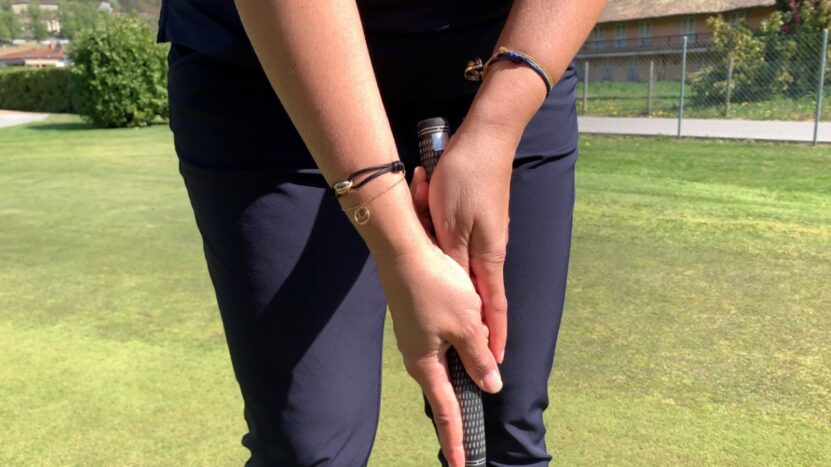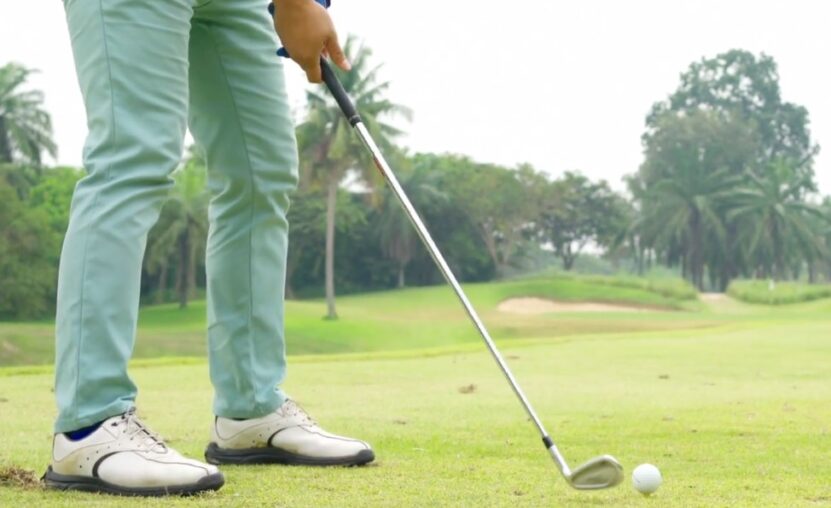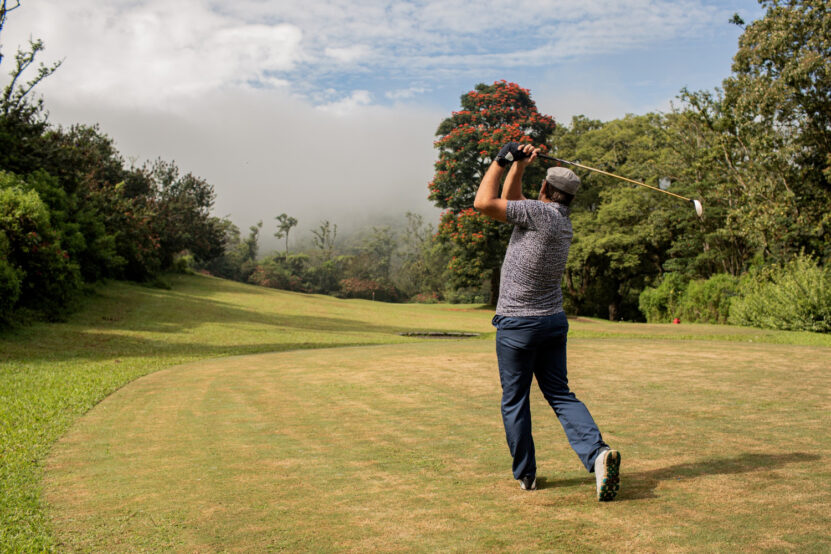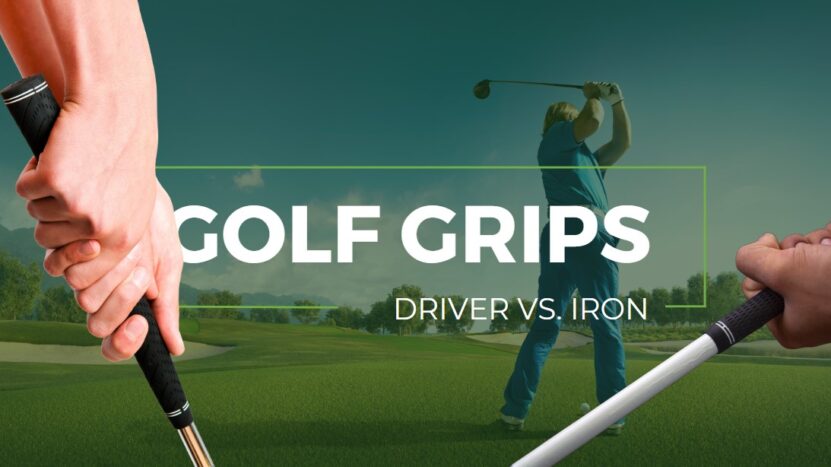A perfect golf swing is an art form, requiring a delicate balance of power, precision, and finesse. Among the countless factors that can make or break your swing, your grip is one of the most crucial, yet often overlooked elements. This essential connection between the golfer and the club influences everything from accuracy to distance, so it’s no surprise that golfers are constantly searching for the perfect grip.
In today’s post, we’ll dive deep into the world of golf grips, comparing and contrasting the “Driver Grip” and the “Iron Grip” and exploring their unique advantages and disadvantages. Whether you’re a seasoned golfer or just starting this comprehensive guide is sure to help you refine your swing and up your golf game.
The Basics of the Grip

Before we explore the differences between them, it’s important to establish a foundational understanding of the golf grip itself. At its core, it is how you hold the club, with different styles affecting how the clubface impacts the ball, ultimately influencing shot trajectory and accuracy.
While there are countless variations, they generally fall into three primary categories: overlapping, interlocking, and ten-finger grips.
Overlapping Grip
Also known as the “Vardon Grip,” this is the most popular one among professional golfers. Named after Harry Vardon, a legendary golfer who popularized the technique, the overlapping grip involves placing the pinky finger of your trailing hand (right hand for right-handed golfers) over the index finger of your leading hand.
Interlocking Grip
It is favored by golfers with smaller hands or those who prefer a more connected feel. In this grip, the pinky finger of your trailing hand interlocks with the index finger of your leading hand, creating a secure connection between the two hands.
Ten-Finger Grip
Also known as the “baseball grip,” it involves placing all ten fingers on the club, with no overlapping or interlocking. It is often recommended for beginners, as it allows for a more natural and secure hold on the club.
The Driver Grip

This is a term often used to describe the style used when hitting a tee shot with a driver or other long-distance clubs, like fairway woods. While it may not differ significantly from the grip you use with other clubs, there are a few key differences that are specifically tailored to maximize distance and consistency off the tee.
Grip Pressure
One of the primary differences between them is the amount of pressure applied. With the driver, maintaining a lighter grip pressure is crucial, as it allows for maximum clubhead speed and a smoother swing. Many golfers use the metaphor of holding a small bird, squeezing just enough to prevent it from flying away, but not so much that you’d hurt it.
Grip Position
With a driver, it’s important to position your hands slightly lower on the grip, allowing for a more relaxed and fluid swing. This position promotes a sweeping motion and a higher launch angle, essential for achieving maximum distance off the tee. A helpful tip for finding the ideal grip position is to ensure that the butt end of the club is just touching the base of your palm when you address the ball.
Alignment
Proper alignment is critical with the driver, as a square clubface is essential for achieving optimal ball flight. To ensure correct alignment, your leading hand’s V (formed by the thumb and index finger) should point towards your trailing shoulder, while the V of your trailing hand should point towards your chin. This alignment will help you maintain a square clubface at impact, resulting in more consistent and accurate drives.
The Iron Grip

This is the style typically used when hitting shots with irons or wedges. While the basic principles of gripping the club remain the same, there are subtle differences that help golfers achieve more control and accuracy with their approach shots.
Grip Pressure
Unlike the driver grip, this one requires slightly firmer pressure. This increased pressure promotes a more stable clubface at impact, ensuring better control and precision when hitting iron shots. It’s important not to grip the club too tightly, as excessive tension can lead to reduced clubhead speed and a loss of feeling. The ideal iron grip pressure should feel like you’re firmly holding onto a tube of toothpaste without squeezing out the contents.
Grip Position
When gripping an iron, your hands should be positioned slightly higher on it than when using a driver. This higher position creates a steeper angle of attack, which is crucial for solid contact and improved ball striking. To find the correct position, ensure that the butt end of the club is resting against the base of your fingers when you address the ball.
Alignment
Similar to the driver, proper alignment is essential when using this one. The V’s formed by the thumb and index finger of both hands should point toward the center of your chest. This neutral alignment helps to maintain a square clubface at impact, promoting consistent and accurate iron shots.
Choosing the Right Grip for Your Game
Now that we’ve explored the differences between them, it’s important to consider which style is best suited for your game. While there are general guidelines for each type of shot, ultimately, the right grip for you will depend on your individual preferences and swing characteristics.
Experimentation
One of the best ways to find the perfect grip is through trial and error. Don’t be afraid to experiment with different styles and pressures to see what works best for you. Pay close attention to how each variation affects your ball flight, accuracy, and distance, and adjust accordingly.
Professional Help
If you’re struggling to find the right one, consider seeking the advice of a golf professional or instructor. A trained eye can often spot inconsistencies in your grip that may be impacting your swing and provide valuable guidance on how to make adjustments.
Consistency
Regardless of which grip style you choose, maintaining consistency throughout your swing is crucial. Ensure that your grip remains constant from the moment you address the ball to the moment of impact. This consistency will help you develop a more reliable and repeatable swing.
FAQs

Can I use Tiger Woods’ putting grip in combination with other putting techniques, such as the AimPoint method?
Yes, it can be used in combination with various cutting techniques, including the AimPoint method. It primarily focuses on improving the consistency and control of your putting stroke, while other techniques like AimPoint address factors such as green reading and alignment.
How long does it take to see improvement in my putting game after adopting Tiger Woods’ putting grip?
The time it takes to see improvement after adopting it will vary depending on factors such as practice frequency, individual skill level, and putting technique. However, with consistent practice and dedication, you should notice improvements in your putting consistency and control over time.
Are there any professional golfers other than Tiger Woods who use a similar putting grip?
Yes, several professional golfers use a variation of the reverse overlap, including Jack Nicklaus and Phil Mickelson. While each golfer may have slight variations in them, the fundamental concept of the reverse overlap remains consistent, emphasizing stability and control during the putting stroke.
How do I know if Tiger Woods’ putting grip is right for me?
The best way to determine if it is right for you is to experiment with it on the practice green. If you find that it improves your consistency and control, it may be a good fit for your game.
Conclusion
The perfect golf grip is a crucial component of a successful swing and should never be underestimated. By understanding the differences between them and experimenting with various techniques, you can unlock your true potential on the golf course.
Remember, there’s no one-size-fits-all solution – finding the right grip for your game takes time, patience, and a willingness to explore new techniques. But with persistence and practice, you’ll be well on your way to mastering the art of the golf swing and achieving new levels of success on the course.

